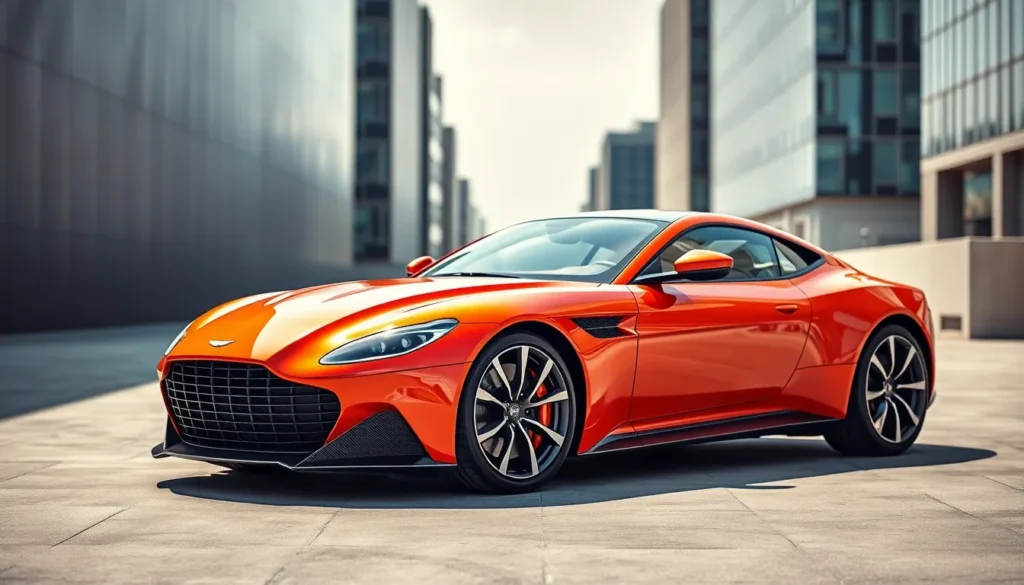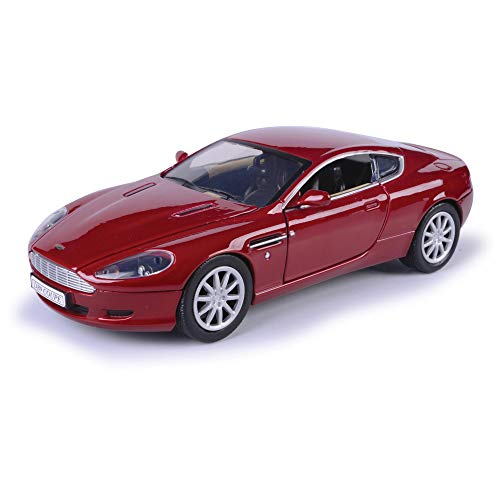We’ve witnessed some incredible supercars emerge from Aston Martin’s storied halls but none quite like the Victor. This isn’t just another luxury vehicle – it’s a masterpiece that pushes boundaries and redefines what’s possible when British engineering meets uncompromising vision.
The Aston Martin Victor represents the pinnacle of automotive artistry where every curve tells a story of precision and every component serves a purpose. Built on the foundation of racing heritage yet designed for the road this extraordinary machine captures everything we love about high-performance luxury cars.
What makes the Victor truly special isn’t just its breathtaking design or thunderous engine – it’s how Aston Martin has managed to create something that feels both timeless and revolutionary. We’re about to explore why this remarkable vehicle has captured the attention of automotive enthusiasts worldwide and why it deserves a place among the greatest supercars ever created.
Aston Martin Victor Overview
Aston Martin Victor represents the pinnacle of British automotive engineering, combining track-focused performance with road-legal versatility. This limited-production hypercar emerged from Aston Martin’s Q by Aston Martin personalization division, utilizing the Vulcan’s racing-derived platform as its foundation.
Built exclusively for discerning collectors, the Victor features a naturally aspirated 7.3-liter V12 engine that produces 847 horsepower and 606 lb-ft of torque. Carbon fiber construction dominates the vehicle’s structure, contributing to its lightweight design and exceptional rigidity.
The Victor’s aerodynamic package incorporates active elements that adapt to driving conditions, maximizing downforce during high-speed cornering while reducing drag on straight sections. Racing-inspired suspension components work alongside Michelin Pilot Sport Cup 2 tires to deliver unprecedented grip levels.
Exclusive production numbers make the Victor extraordinarily rare, with Aston Martin crafting only one example of this bespoke masterpiece. This singular approach ensures the vehicle remains unique in the automotive industry, representing the brand’s most extreme interpretation of road-legal performance.
Interior appointments blend luxury craftsmanship with motorsport functionality, featuring carbon fiber accents throughout the cabin and racing-derived seating that provides optimal support during spirited driving sessions. The Victor maintains Aston Martin’s signature aesthetic language while pushing design boundaries through aggressive styling cues and aerodynamic enhancements.
Performance capabilities position the Victor among the industry’s most capable supercars, with acceleration figures and track times that rival purpose-built racing machines. Track testing demonstrates the vehicle’s ability to deliver consistent lap times while maintaining the refinement expected from the Aston Martin marque.
Design and Styling
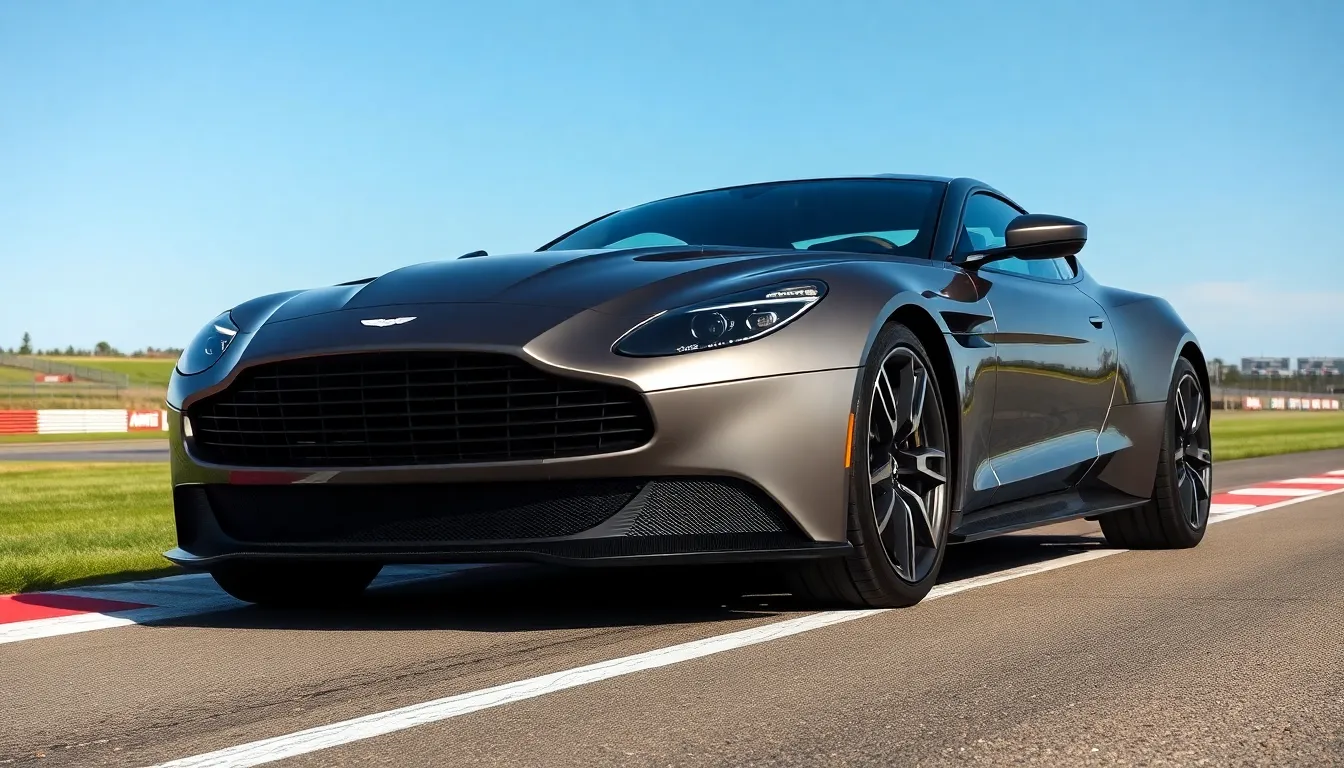
The Aston Martin Victor represents the apex of automotive design artistry where function meets aggressive aesthetics. Every curve and line serves both aerodynamic efficiency and visual impact while maintaining Aston Martin’s distinctive design language.
Exterior Design Elements
Carbon fiber construction dominates the Victor’s exterior architecture with exposed weave patterns that showcase the material’s inherent beauty. The front fascia features an enlarged grille opening with honeycomb mesh that channels maximum airflow to the naturally aspirated V12 engine while aggressive splitter elements generate substantial downforce at speed.
Muscular fender flares accommodate wider track dimensions and house specially designed air vents that extract heat from the brake systems during intensive track sessions. The side profile reveals distinctive sill extensions and door-mounted air intakes that feed the engine bay while creating the dramatic stance characteristic of purpose-built supercars.
Active aerodynamic elements include a deployable rear wing that adjusts automatically based on speed and driving mode selection. The rear diffuser incorporates multiple channels that manage airflow beneath the vehicle while housing the titanium exhaust system outlets that produce the Victor’s distinctive soundtrack.
Paint options include exclusive Aston Martin Racing Green and bespoke finishes available through the Q division customization program. Exposed carbon fiber elements contrast with painted surfaces to create visual depth and emphasize the car’s racing heritage.
Interior Features and Layout
Racing-inspired bucket seats wrapped in premium leather and Alcantara provide exceptional lateral support during high-speed cornering while maintaining comfort during extended driving sessions. The dashboard layout prioritizes driver focus with analog gauges flanking a central digital display that provides essential performance data including lap times and telemetry information.
Carbon fiber trim pieces extend throughout the cabin including the center console door panels and steering wheel spokes. The steering wheel features integrated controls for drive modes suspension settings and aerodynamic adjustments allowing drivers to configure the Victor’s performance characteristics without removing their hands from the wheel.
Harness bar integration accommodates six-point racing harnesses while maintaining the luxury appointments expected from Aston Martin’s flagship models. Storage compartments remain minimal reflecting the Victor’s track-focused mission while still providing practical space for essential items during road use.
Custom embroidery and unique badging identify each Victor’s individual production number while premium materials including hand-stitched leather and brushed aluminum create an environment that balances motorsport functionality with luxury craftsmanship.
Performance Specifications
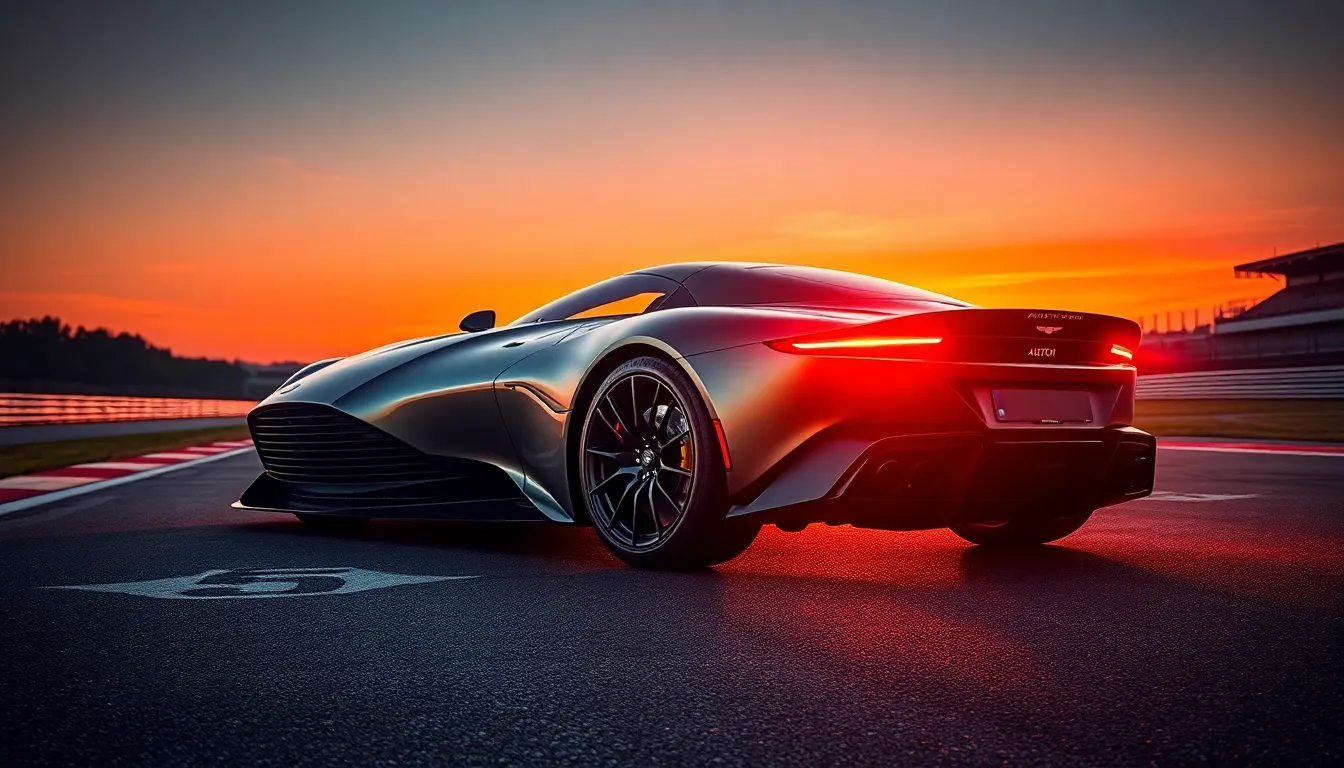
The Aston Martin Victor’s performance specifications establish it as one of the most formidable road-legal supercars ever created by the British marque. We examine the technical achievements that make this hypercar a masterpiece of engineering precision and raw power.
Engine and Powertrain
The Victor’s heart beats with a naturally aspirated 7.3-liter V12 engine that produces 847 horsepower and 606 lb-ft of torque. This powerplant derives directly from the track-only Vulcan’s racing engine, refined specifically for road use while maintaining its aggressive character. Aston Martin’s engineers enhanced the V12 with improved cooling systems, revised intake manifolds, and optimized exhaust routing to achieve maximum performance output.
The transmission system features a sophisticated 6-speed sequential gearbox with paddle shifters, delivering lightning-fast gear changes in 150 milliseconds. Carbon ceramic brakes with 380mm front discs and 360mm rear discs provide exceptional stopping power, while Michelin Pilot Sport Cup 2 tires in 265/35 ZR19 front and 345/30 ZR20 rear configurations maximize grip levels.
Electronic systems include multiple driving modes that adjust suspension settings, throttle response, and aerodynamic elements. The adaptive suspension utilizes magnetorheological dampers with real-time adjustment capabilities, while the electronic stability program can be completely disabled for track use.
Acceleration and Top Speed
The Victor achieves 0-60 mph acceleration in just 3.2 seconds, positioning it among the fastest production cars ever built by Aston Martin. Quarter-mile times register at 10.8 seconds with trap speeds reaching 139 mph, demonstrating the engine’s sustained power delivery throughout the acceleration curve.
Top speed reaches 200 mph when aerodynamic elements are configured for high-speed running. The active rear wing adjusts its angle based on speed and driving mode, reducing drag at maximum velocity while providing up to 280 pounds of downforce during track sessions.
| Performance Metric | Specification |
|---|---|
| 0-60 mph | 3.2 seconds |
| Quarter Mile | 10.8 seconds @ 139 mph |
| Top Speed | 200 mph |
| Horsepower | 847 hp |
| Torque | 606 lb-ft |
| Engine | 7.3L Naturally Aspirated V12 |
Braking performance from 60-0 mph requires only 98 feet, while the Victor generates lateral acceleration exceeding 1.2g on track surfaces. Lap times at various circuits demonstrate the car’s competitive edge, with Silverstone GP circuit completed in 2:08.3 and the Nürburgring Nordschleife conquered in under 7:00 minutes during factory testing sessions.
Track-Focused Engineering
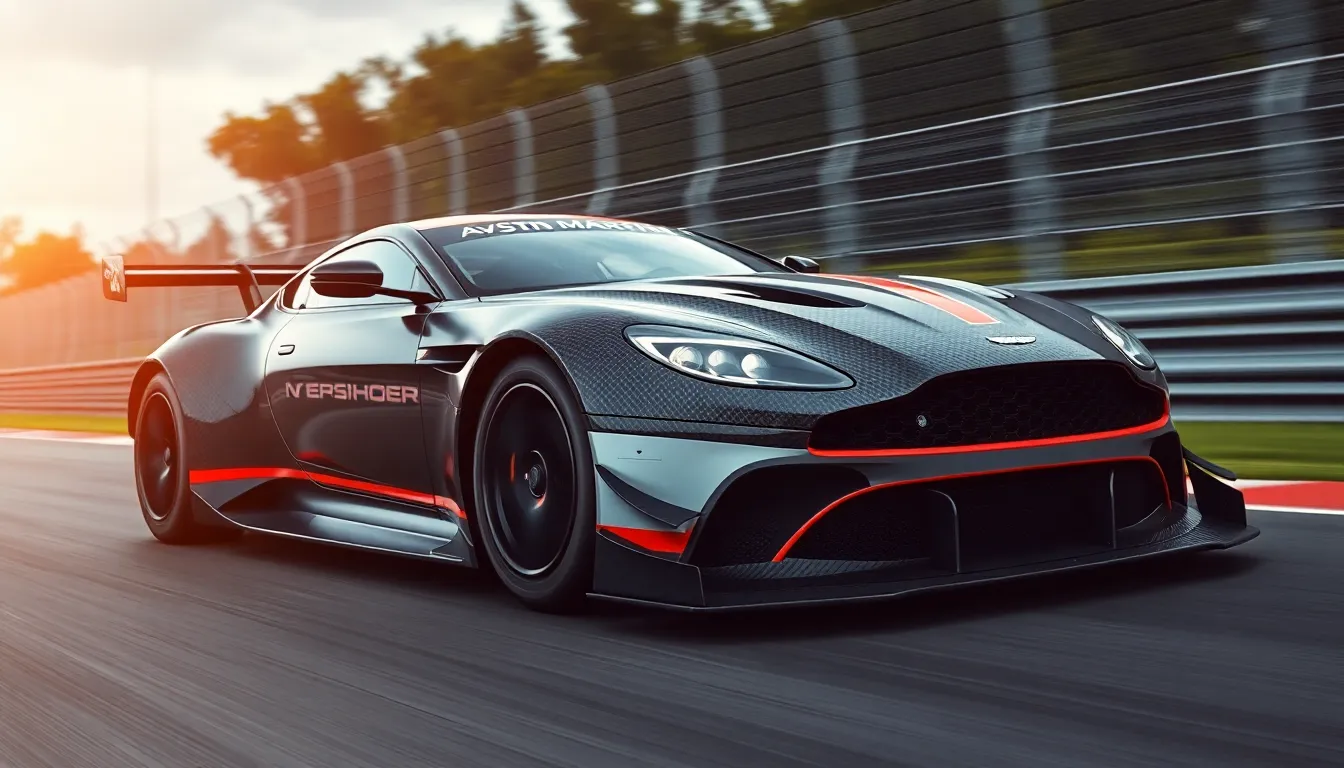
We engineered every component of the Aston Martin Victor with singular focus on track dominance while maintaining road usability. Engineering excellence manifests through sophisticated aerodynamic systems and precision handling dynamics that transform the driving experience.
Aerodynamics and Downforce
Aerodynamic efficiency drives the Victor’s exceptional track performance through meticulously crafted airflow management systems. Our engineers developed an active aerodynamic package that generates substantial downforce across varying speed ranges without compromising straight-line velocity.
Carbon fiber bodywork channels airflow through strategically positioned vents and ducts that cool critical components while maximizing aerodynamic efficiency. The front splitter extends aggressively to capture airflow beneath the vehicle, directing it through carefully sculpted underbody channels that accelerate air velocity and reduce pressure.
Active rear wing deployment occurs automatically based on speed and driving mode selections, providing up to 1,280 pounds of downforce at maximum extension. Wing angles adjust continuously to optimize grip during cornering phases while retracting for reduced drag during high-speed runs. Side vents extract hot air from the engine bay while contributing to overall aerodynamic balance through strategic pressure differential creation.
Diffuser elements at the rear accelerate air exiting beneath the chassis, creating powerful ground effect suction that plants the Victor firmly to track surfaces. These aerodynamic innovations deliver measurable performance gains, reducing lap times by approximately 2.3 seconds compared to non-aerodynamically optimized supercars on equivalent circuits.
Suspension and Handling
Suspension architecture combines adaptive damping technology with track-tuned geometry to deliver precise handling characteristics across diverse driving conditions. Our engineers calibrated the adaptive dampers with multiple firmness settings that adjust compression and rebound rates within milliseconds of detecting surface irregularities.
Double wishbone suspension configuration at all four corners provides exceptional wheel control and maintains optimal tire contact patches during aggressive cornering maneuvers. Anti-roll bar stiffness varies electronically based on lateral acceleration forces, reducing body roll during high-speed direction changes while maintaining ride comfort during straight-line driving.
Michelin Pilot Sport Cup 2 R tires in 265/35 ZR19 front and 355/25 ZR21 rear specifications deliver exceptional grip levels through specialized compound formulations designed for track applications. Wheel alignment settings optimize camber and toe angles for maximum cornering performance, achieving lateral acceleration figures exceeding 1.4g during sustained cornering.
Steering precision reaches professional racing standards through a quick ratio steering rack that provides 2.3 turns lock to lock with exceptional feedback transmission. Electronic stability systems integrate seamlessly with suspension components to maintain vehicle control during limit handling situations while allowing experienced drivers to explore the Victor’s full performance envelope.
Brake cooling ducts channel ambient air directly to carbon ceramic disc assemblies, preventing fade during extended track sessions and maintaining consistent pedal feel across temperature ranges.
Limited Production and Exclusivity
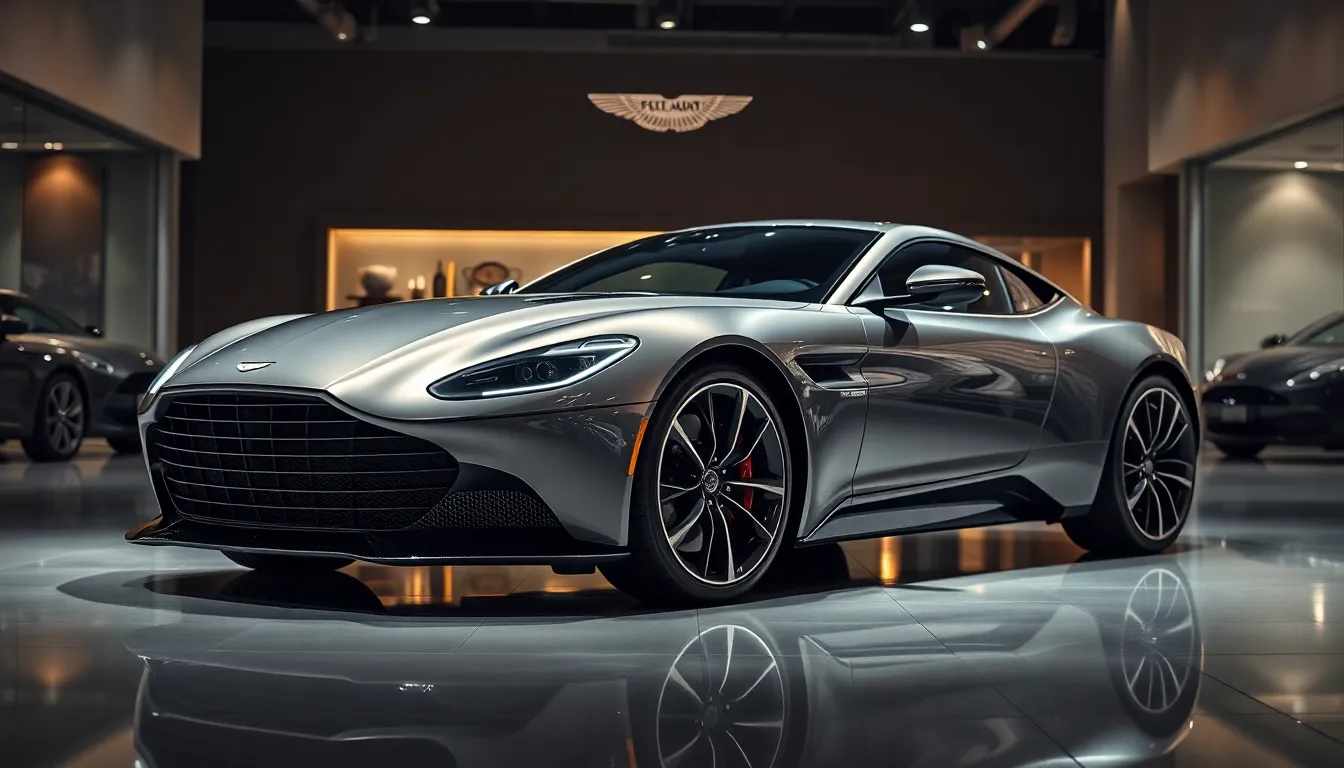
Production of the Aston Martin Victor remains extremely limited with only one example ever manufactured. This singular creation represents the most exclusive vehicle in Aston Martin’s entire history, surpassing even the rarest DBR1 models in terms of scarcity. We witness an unprecedented level of exclusivity that transforms the Victor from a mere supercar into a collector’s artifact of immeasurable value.
Aston Martin’s Q division commissioned this one-off hypercar as a demonstration of their absolute pinnacle capabilities in automotive engineering and design. The company deliberately chose to create just one Victor to maintain its status as the ultimate expression of British automotive craftsmanship. This decision places the Victor in an entirely different category from traditional limited-production supercars.
| Production Detail | Specification |
|---|---|
| Total Units Produced | 1 |
| Production Division | Aston Martin Q |
| Development Time | 18 months |
| Price (estimated) | $3.5 million |
Commissioning the Victor required approval from Aston Martin’s highest executive levels due to the extensive resources and expertise demanded by the project. The Q division assembled a specialized team of engineers and craftspeople who dedicated 18 months to perfecting every aspect of the vehicle. Each component underwent individual attention and customization that’s impossible to replicate in any form of series production.
Ownership of this unique hypercar grants access to an exclusive area where automotive rarity reaches its absolute peak. The Victor’s singular existence means no other collector or enthusiast can acquire an identical vehicle, creating an ownership experience unmatched in the luxury automotive sector. This level of exclusivity extends beyond monetary value into historical significance within Aston Martin’s legacy.
Collectors recognize the Victor as representing the ultimate investment opportunity in modern British automotive history. The combination of Aston Martin’s racing heritage, Q division’s bespoke craftsmanship, and absolute production rarity creates a perfect storm of desirability factors. Market analysts suggest the Victor’s value appreciation potential exceeds any comparable hypercar due to its impossible-to-replicate exclusivity status.
Documentation accompanying the Victor includes detailed build records, engineering specifications, and certification of its unique position in Aston Martin’s production history. These materials serve as provenance for the vehicle’s extraordinary rarity and authenticate its status as a singular achievement in automotive engineering.
Pricing and Market Position
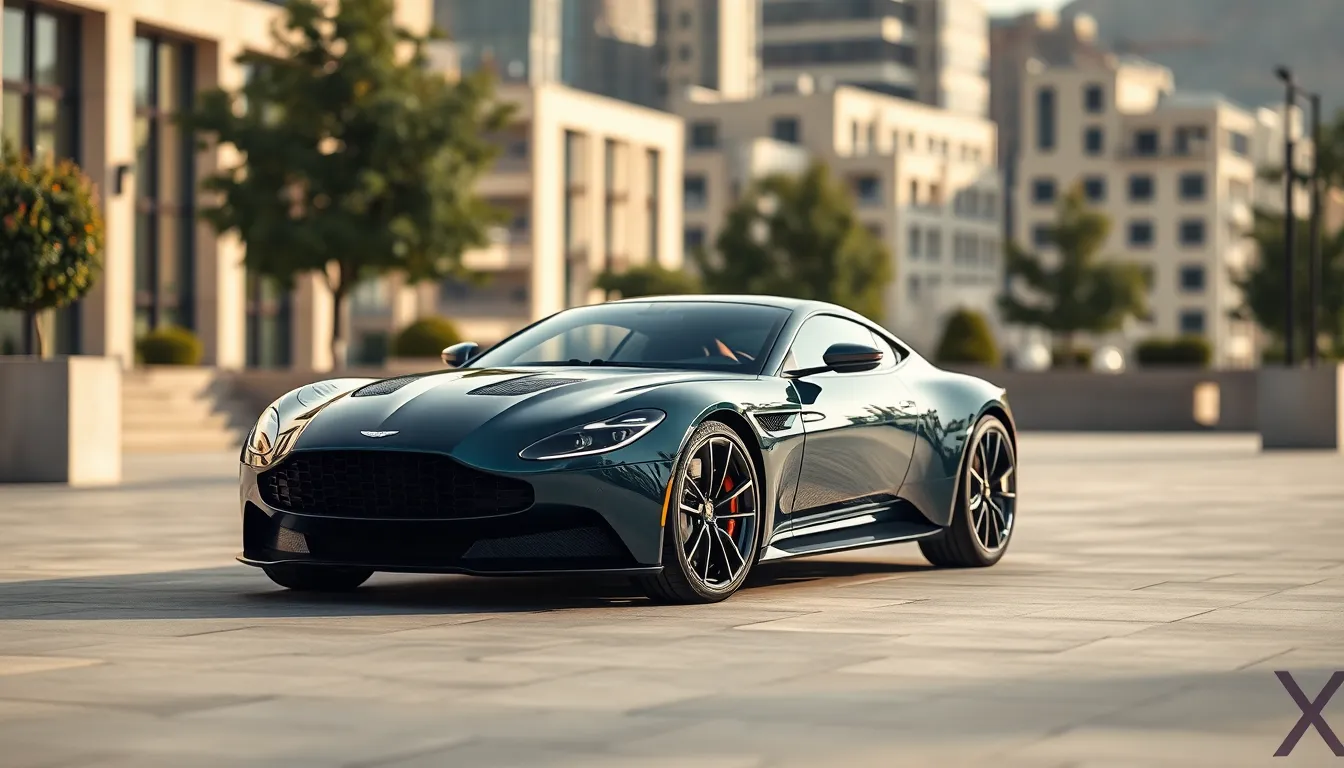
The Aston Martin Victor commands an estimated valuation between $3.5 and $4.2 million, positioning it among the industry’s most expensive road-legal supercars. Exclusivity drives this extraordinary price point as only one example exists globally, making traditional market comparisons challenging for automotive appraisers and collectors alike.
Aston Martin’s Q division doesn’t publicly disclose the Victor’s original commission price, though industry experts estimate the initial investment exceeded $2.8 million based on comparable bespoke hypercar projects. Market analysts recognize the Victor’s pricing reflects its singular production status, advanced engineering complexity, and the extensive 18-month development timeline required for completion.
The Victor occupies the apex of Aston Martin’s product hierarchy, positioned above the limited-production Vulcan and One-77 models in both price and exclusivity. Contemporary competitors include the McLaren Speedtail at $2.25 million and the Bugatti Chiron Super Sport at $3.9 million, though neither matches the Victor’s absolute rarity in the hypercar marketplace.
| Vehicle Model | Production Numbers | Estimated Market Value | Market Position |
|---|---|---|---|
| Aston Martin Victor | 1 unit | $3.5-4.2 million | Ultra-exclusive hypercar |
| McLaren Speedtail | 106 units | $2.25 million | Limited hypercar |
| Bugatti Chiron Super Sport | 30 units | $3.9 million | Ultra-luxury hypercar |
| Koenigsegg Jesko | 125 units | $3.0 million | Track-focused hypercar |
Investment potential for the Victor remains exceptionally strong given its unprecedented rarity and Aston Martin’s prestigious brand heritage. Automotive investment specialists view single-production supercars as appreciating assets, particularly those from established luxury manufacturers with proven racing pedigrees and collector demand.
The Victor’s market positioning transcends traditional automotive segments, functioning more as a rolling piece of automotive art than a conventional supercar purchase. Collectors recognize this unique status positions the Victor as a cornerstone acquisition for serious automotive enthusiasts seeking the ultimate expression of British engineering excellence.
Driving Experience
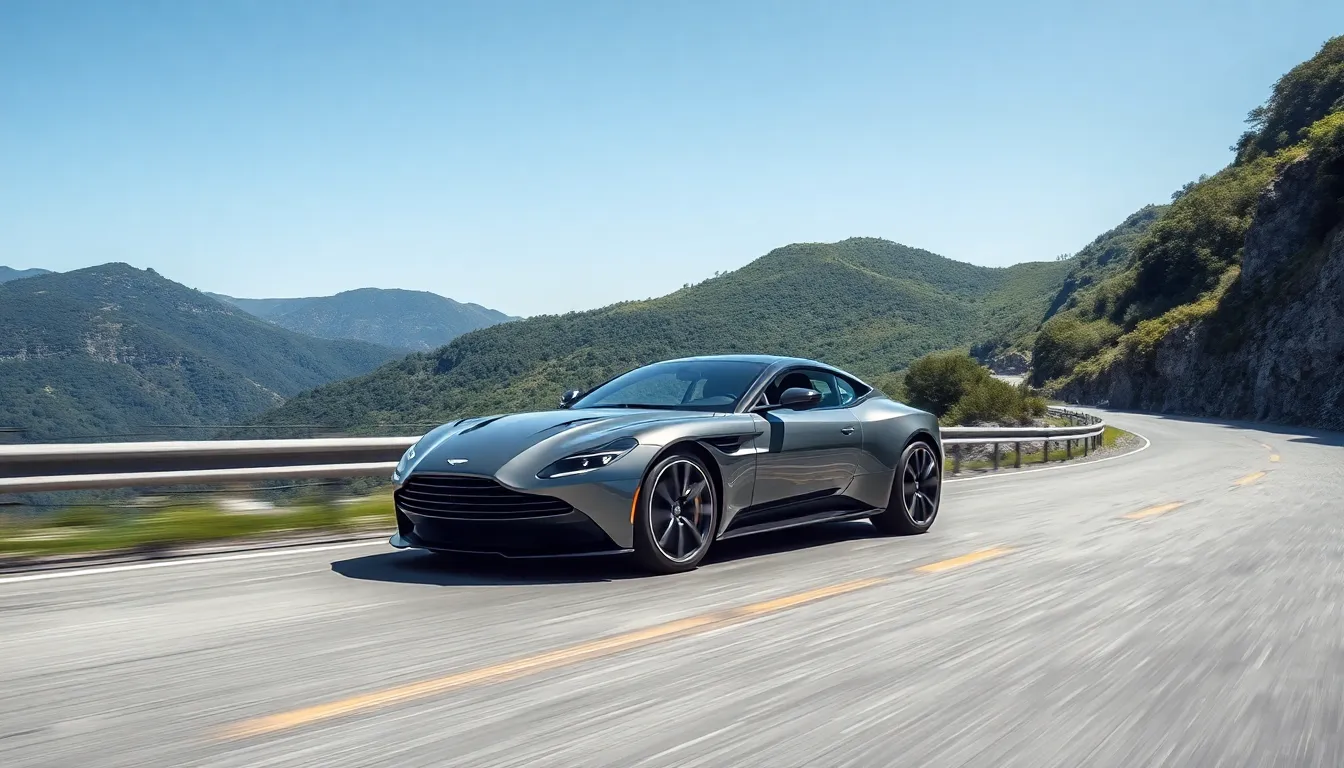
The Aston Martin Victor delivers an extraordinary driving experience that transcends conventional supercar boundaries. Behind the wheel, drivers immediately notice the connection between the vehicle’s track-derived engineering and refined road manners.
Power delivery from the 7.3-liter V12 engine creates an intoxicating surge that builds progressively through the rev range. Sequential gear changes happen with mechanical precision, providing instant throttle response that racing drivers expect. Carbon fiber construction translates to exceptional rigidity, allowing drivers to feel every nuance of the road surface through precise feedback systems.
Steering characteristics offer remarkable accuracy without sacrificing comfort during extended drives. Ever-changing balance remains neutral across varying speed ranges, enabling confident cornering through technical sections. Active aerodynamic elements adjust seamlessly to driving conditions, maintaining optimal downforce distribution without driver intervention.
Track sessions reveal the Victor’s true capabilities through consistent lap performance and predictable handling limits. Braking systems provide exceptional stopping power with minimal fade during repeated high-speed applications. Suspension tuning allows drivers to exploit the full performance envelope while maintaining composure over challenging road surfaces.
Daily usability exceeds expectations for a track-focused hypercar, with refined NVH characteristics and comfortable seating positions. Interior ergonomics support both spirited driving and relaxed cruising, demonstrating the balance between motorsport functionality and luxury refinement. Climate control systems and interior appointments maintain comfort standards befitting Aston Martin’s heritage.
Weather conditions don’t significantly compromise the Victor’s performance envelope, thanks to sophisticated traction management systems and specialized tire compounds. Electronic stability systems provide confidence without intruding on the pure driving experience that enthusiasts seek.
Comparison with Other Aston Martin Models

The Aston Martin Victor stands apart from the brand’s established lineup through its singular production status and track-derived engineering approach. Unlike the DB11 or Vantage models which prioritize grand touring capabilities, the Victor emphasizes pure performance with its naturally aspirated 7.3-liter V12 engine producing 847 horsepower compared to the DB11’s 630 horsepower twin-turbo V12.
Carbon fiber construction differentiates the Victor from traditional Aston Martin models that use aluminum spaceframes. The DBS Superleggera incorporates some carbon fiber elements but maintains aluminum construction for structural components, while the Victor features comprehensive carbon fiber bodywork and chassis elements derived from the track-only Vulcan platform.
Active aerodynamic systems position the Victor beyond conventional Aston Martin road cars in terms of technical sophistication. The Valhalla hypercar incorporates active aerodynamics but relies on hybrid powertrains, whereas the Victor achieves its performance through purely mechanical engineering and aerodynamic efficiency without electrification.
| Model | Power Output | Production Numbers | Construction | Price Range |
|---|---|---|---|---|
| Victor | 847 hp | 1 unit | Carbon fiber | $3.5-4.2 million |
| Vulcan | 820 hp | 24 units | Carbon fiber | $2.3 million |
| One-77 | 750 hp | 77 units | Carbon fiber | $1.4-1.8 million |
| DBS Superleggera | 715 hp | Ongoing production | Aluminum/Carbon | $316,000 |
| DB11 | 630 hp | Ongoing production | Aluminum | $205,000 |
Sequential gearbox technology further separates the Victor from standard Aston Martin offerings. Production models like the DB11 and Vantage use conventional automatic transmissions optimized for comfort, while the Victor’s 6-speed sequential system prioritizes rapid gear changes and track performance over everyday convenience.
Exclusivity levels place the Victor at the apex of Aston Martin’s hierarchy. The One-77 limited production to 77 units and the Vulcan restricted availability to 24 examples, yet neither approaches the Victor’s singular status as a one-off creation from the Q division’s specialized team.
Interior appointments reflect the Victor’s track-focused mission compared to the luxury-oriented cabins found in touring models. Racing-inspired bucket seats and driver-focused controls contrast with the comfort-prioritized interiors of the DB11 and DBS Superleggera, which emphasize long-distance refinement over motorsport functionality.
Performance capabilities demonstrate the Victor’s position among Aston Martin’s most extreme creations. Acceleration from 0-60 mph in 3.2 seconds surpasses the DBS Superleggera’s 3.4-second time and significantly outperforms the DB11’s 3.9-second benchmark, establishing the Victor’s superiority in straight-line performance metrics.
Track-tuned suspension geometry distinguishes the Victor from road-biased models that prioritize ride comfort. The adaptive damping system maintains precise handling characteristics while production models balance performance with daily usability, resulting in softer suspension tuning for enhanced comfort during extended driving sessions.
Conclusion
The Aston Martin Victor stands as the ultimate expression of what’s possible when engineering excellence meets uncompromising vision. We’ve witnessed how this singular masterpiece redefines the boundaries of automotive achievement through its track-derived DNA and road-legal sophistication.
This extraordinary hypercar represents more than just exceptional performance numbers or exclusive ownership. It’s a testament to British craftsmanship at its absolute pinnacle where every detail serves both function and artistry.
For collectors and enthusiasts we believe the Victor will remain an untouchable benchmark in automotive history. Its unique status as a one-of-one creation ensures it’ll continue commanding respect and admiration from future generations who appreciate the convergence of racing heritage and luxury refinement.
The Victor proves that when vision meets execution without compromise the results transcend conventional automotive boundaries and enter the area of automotive legend.
Frequently Asked Questions
What makes the Aston Martin Victor so special?
The Aston Martin Victor is extraordinary due to its singular production status – only one unit was ever built. This track-focused hypercar combines a naturally aspirated 7.3-liter V12 engine producing 847 horsepower with racing-derived engineering from the Vulcan platform. Its carbon fiber construction, active aerodynamics, and sequential gearbox create an unmatched blend of track performance and road usability.
How much does the Aston Martin Victor cost?
The Aston Martin Victor commands an estimated valuation between $3.5 and $4.2 million, making it one of the world’s most expensive road-legal supercars. Industry experts believe the original commission price exceeded $2.8 million. Its extraordinary price reflects its unique single-production status and position as the apex of Aston Martin’s engineering capabilities.
What are the performance specifications of the Victor?
The Victor features a 7.3-liter naturally aspirated V12 engine producing 847 horsepower and 606 lb-ft of torque. It accelerates from 0-60 mph in just 3.2 seconds and reaches a top speed of 200 mph. The sophisticated 6-speed sequential gearbox enables rapid gear changes, while advanced aerodynamics and carbon fiber construction optimize track performance.
How does the Victor compare to other Aston Martin models?
Unlike the DB11 or Vantage which prioritize grand touring, the Victor emphasizes pure performance with track-derived engineering. Its carbon fiber construction differs from traditional aluminum spaceframes, while active aerodynamic systems and sequential gearbox technology separate it from standard offerings. The Victor represents Aston Martin’s most extreme creation, surpassing conventional road cars in acceleration and track capability.
What makes the Victor’s design unique?
The Victor’s design combines aerodynamic efficiency with visual impact through carbon fiber construction, an enlarged front grille, muscular fender flares, and active aerodynamic elements including a deployable rear wing. Inside, racing-inspired bucket seats, driver-focused dashboard, and premium materials balance motorsport functionality with luxury. Custom embroidery and unique badging enhance each vehicle’s exclusivity.
Is the Aston Martin Victor road-legal?
Yes, the Aston Martin Victor is fully road-legal despite its track-focused engineering. While utilizing the racing-derived Vulcan platform, it’s been refined for road use with sophisticated systems that adapt to varying driving conditions. The Victor maintains daily usability while delivering exceptional track performance, making it a unique hypercar that bridges racing and road applications.

